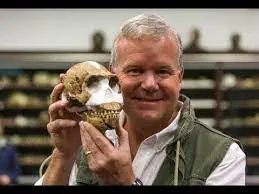John Hawks hints at Missing Link admixture with modern day Africans?
A study released in late 2019 received little attention, but had profound implications for solving the puzzle of Sub-Saharan African admixture with archaic Hominids.
Note – Putative Ghost Haplotyes abbreviated to PGH is a fancy way of saying, genetic line from an unidentified archaic Hominid species, could be Homo ergaster (Afro Erectus), some variety of Heidelbergensis or Australopithecus.
From Genomeweb.com, Dec. 5 2019,
Ancestors of Sub-Saharan Africans Interbred With Archaic Humans
 Researchers have teased out evidence suggesting the ancestors of modern-day sub-Saharan Africans interbred with an archaic human group…
Researchers have teased out evidence suggesting the ancestors of modern-day sub-Saharan Africans interbred with an archaic human group…
As anatomically modern humans migrated from Africa, they came into contact and interbred with archaic human groups. Non-Africans are estimated to have inherited about 2 percent of their DNA from Neanderthals, while Melanesian and aboriginal Australians have inherited about 4 percent to 5 percent of their DNA from Denisovans, and yet other populations…
Note – As we’ve chronicled here at Subspecieist.com, the actual percentage of Neanderthal DNA in Euro-ethnics could be as much as 6%. Additionally, as stated above, aboriginal Australians have significant DNA from archaic ghost species, could be Homo erectus. There is some speculation it could be a third-branch of Denisovan.
The avg number of PGHs was “much higher” between 5 and 15 times, among Sub-Saharan Africans
Continuing:
To study this, Jeffrey Wall, a researcher at the University of California, San Francisco and his colleagues used a dataset of genomes from more than 1,600 individuals from across the globe… the researchers found evidence of such admixture among sub-Saharan African individuals based on a linkage disequilibrium approach.
The researchers considered the long, diverged haplotypes they found as candidate regions for archaic human introgression and dubbed them “putative ghost haplotypes,” or PGHs.
The average number of PGHs, they noted, was much higher — between five and 15 times — among sub-Saharan Africans than non-Africans. It was also higher than the researchers had expected based on simulated datasets. [Emphasis added]
The studies’ authors specifically mention Khoisans, Central African Pygmies, and West, East, and North Africans, and suggest a “major admixture event” must’ve taken place at some point on the African continent.
Could that PGH be Homo naledi or a late Autralopithecines?
More and more evidence is emerging that Homo naledi and possibly late Australopithecines were contemporary with modern humans.
Note, Jebel Irhoud in Morocco is generally regarded as the first Homo sapien specimen dated to 320kya.
Dating of first Hominid skull from Morocco 280,000 to 350,000 years ago
From ScienceMag.org, 2017:
 75 kilometers from Morocco’s west coast. With its big brain but primitive skull shape, the skull was initially assumed to be an African Neandertal…
75 kilometers from Morocco’s west coast. With its big brain but primitive skull shape, the skull was initially assumed to be an African Neandertal…
geneticists date the split of humans and our closest cousins, the Neandertals, to at least 500,000 years ago, notes paleoanthropologist John Hawks of the University of Wisconsin in Madison. So you might expect to find hints of our species somewhere in Africa well before 200,000 years ago, he says.
Continuing:
Archaeologist Daniel Richter of the Max Planck in Leipzig used a thermoluminescence technique to measure how much time had elapsed since crystalline minerals in the flint were heated by fire. He got 14 dates that yielded an average age of 314,000 years, with a margin of error from 280,000 to 350,000 years. [Emphasis added]
Dating of small-brained Homo naledi skull in South Africa, “between 236,000 and 350,000 years ago”
Hawks, lecture to CARTA at the Univ. of California, San Diego, April 18, 2020 (YouTube 9 minute mark):
In the Lasedi chamber [Rising Star cave system in South Africa] we recovered the really impressive skeleton of an individual of Homo naledi, which we named Neo, in addition to parts of at least two additional individuals… our work to date the site took some time… directly from the Homo naledi teeth themselves… to narrow down the range of dates for this hominid sample to between 236,000 and 350,000 years ago.
For a hominid that has a brain a third the size of brain of ours in Africa, this was very surprising to us.



I rattling happy to find this site on bing, just what I was searching for : D also saved to fav.